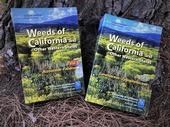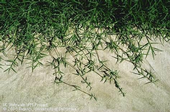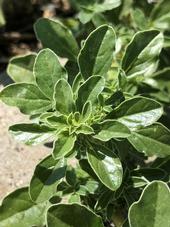- Author: Lynn M. Sosnoskie

Why is weed identification important? Simply stated, because not all management strategies are equally effective against all weed species. The weed community present in a given field, orchard, or vineyard may be comprised of species that are differentially sensitive to different herbicide modes of action or physical control practices. Even closely related species may respond differently to different herbicide active ingredients. For example, according to UC IPM crop management guidelines, metribuzin and S-metolachlor can provide partial control of yellow nutsedge (Cyperus esculentus) but no control of purple nutsedge (Cyperus rotundus). Consequently, to develop effective weed control programs, managers should be aware...
- Author: John A Roncoroni
- Posted by: Gale Perez

[From the Spring issue of the UC IPM Retail Nursery & Garden Center News and the Pests in the Urban Landscape blog]
“I hate crabgrass!” is a common lament I've heard from residents during my 35 years in UC Weed Science. However, four out of five times, the weed people are actually referring to is not crabgrass, but bermudagrass or dallisgrass. So why does knowing the name of the weed matter? It...
- Author: Lynn M. Sosnoskie

According to the CalFlora website (http://www.calflora.org/), 21 species of amaranths occur (to some extent) in California. While many are non-native, a few, including prostrate pigweed (Amaranthus blitoides) and Palmer amaranth (Amaranthus palmeri), are indigenous. While it may be convenient to lump all of the genus Amaranthus together when considering weed management options, proper identification is important for understanding the potential for crop yield loss (not all amaranths were created equal with respect to competitiveness) and the possibility of herbicide resistance (populations of Palmer amaranth with resistance to glyphosate have been confirmed in the...
- Author: Rebecca Ozeran

In the job listing for my position, weed identification and management were never explicitly mentioned. “Natural resource efforts” in the listing only mentioned water, forage, soils and “the wide array of issues” relating to rangeland ecosystem services. Of course, pests are an issue relating to rangeland ecosystem services (healthy water, soil, and air; biodiversity; etc.), but when I first joined UCCE, I did not expect to spend a large amount of time on weeds.
Now I know, a year and a half in, an incoming phone call is more likely to relate to weed management than to any other topic. Ranch visits for any purpose will usually include a discussion of weedy species on the property. While weed management is...
- Author: Joseph DiTomaso

For years, the diagnostic program for weeds of the western United States was only available on CD format. With many computers moving away from CD drives, fewer people were able to use the identification tool. However, both the broadleaf weeds and the grass weeds are now available in a flash drive format, which is not only more convenient to carry and easier to use, but more versatile on most PC-based computers. The program still contains 754 broadleaf species and another 231 grass or grass-like species. In total, the program allows for the identification of 985 species. A number of native perennial grasses are also included to help restorationists determine what species are becoming established after initiating a revegetation program....


